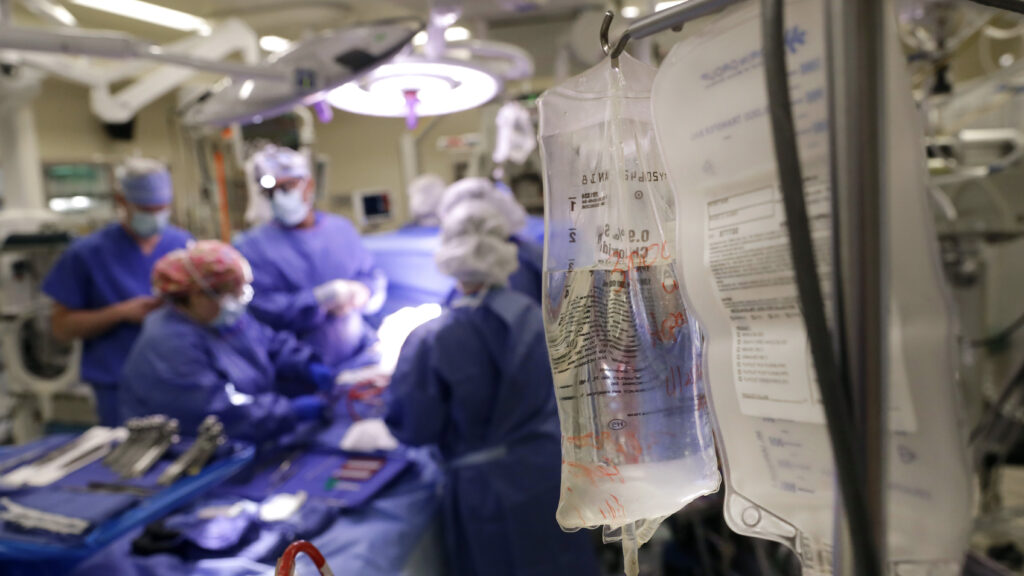They call it “failure to rescue,” which means a surgical patient died from complications that might have been averted if recognized and treated. New research suggests that’s why women are less likely to survive high-risk cardiovascular surgery than men.
Female patients who underwent four common but serious procedures — abdominal aortic aneurysm repair, coronary artery bypass surgery, or atrial or mitral valve replacements — later developed complications at the same rate as men. But the study found these women were more likely to die within 30 days than men with the same serious post-op problems.
advertisement
Based on medical records from more than 860,000 Medicare patients who were treated from October 2015 to February 2020 (just before Covid-19 surged), the researchers conclude that surgical teams failed to rescue female patients with complications more often than male patients, missing opportunities to send them back for a reoperation or other remedy. Their investigation was published Wednesday in JAMA Surgery.
The authors also call it a failure to recognize and then respond to potentially deadly problems. These complications occurred in 15% of all patients after any of the procedures. Clinicians failed to save 10.71% of the female patients compared to 8.58% of the male patients.
“This new paper shows once again that there are very important differences in outcomes by sex,” said Mario Gaudino, a cardiothoracic surgeon at Weill Cornell Medicine and NewYork-Presbyterian Hospital who studies cardiac surgery outcomes. He was not involved in the new study. ”I do suspect that one of the key reasons is that the diagnostic algorithms in the treatment for their complications are the same for men and women, but they should not be the same.”
advertisement
The complications included heart attacks, kidney failure, pulmonary embolisms, pneumonia, surgical-site infection, and hemorrhage. If a patient went back for a second operation within days of the first, the authors interpreted that as recognition of life-threatening complications.
“We as clinicians fail to rescue female patients with complications after high-risk surgery more often than male patients,” the authors wrote. “These findings suggest that improved recognition of and response to postoperative complications may narrow sex disparities after high-risk surgery.”
The researchers ruled out differences between hospitals: their size, the number of nurses per patient, the number of procedures performed. Female patients were more likely to have their cardiac surgery at larger, high-volume teaching hospitals traditionally viewed as better-quality institutions.
That surprised lead study author Catherine Wagner, a cardiothoracic surgery resident at the University of Michigan.
“If anything, these results show how pervasive of an issue this problem is. Despite going to hospitals that should have a ‘protective’ effect against failure to rescue, women still had higher rates of failure to rescue,” she said in an email to STAT. “This suggests there is a systemic problem contributing to the under-recognition and under-treatment of women’s postoperative complications.”
There were differences by sex: Female patients were slightly older and had more comorbidities than men, but they were less likely to have arrived at the hospital after an unplanned admission.
“I think the cause for these worse outcomes is complex and multifactorial, ranging from understudied biological differences in disease, and differences in social support, but what I am most interested in (and what I think is the most amenable to change) are the differences in the care we provide to male and female patients,” Wagner said.
Joanna Chikwe, chair of cardiac surgery in the Smidt Heart Institute at Cedars-Sinai, told STAT that while the data suggest women may be less likely to have reoperations than men, the data do not provide insights into delays or errors in diagnosis or treatment, or other differences in care that might explain the study findings. She was not involved in the study. And, she wrote in an email, “Previous studies suggest that female surgeons are more likely than male surgeons to achieve good outcomes with surgery in female patients.”
advertisement
It’s not a new finding that female patients have lower survival rates. Previous research has pointed to differences in anatomy, such as smaller blood vessels. Simply being smaller overall can extend time in surgery.
Disparities show up in the ER as well as the OR, too, authors said, citing previous research. When female patients come to hospital emergency departments, their signs and symptoms of a heart attack may not be recognized, differing as they do from the classic chest-clutching images we see in movies.
More than symptoms vary between female and male patients, Gaudino said. Levels of enzymes such as troponin, commonly used to diagnose a heart attack, are different in women and men but the criteria are the same.
“I think women should have a different diagnostic algorithm and probably even different treatments as compared to men,” said Gaudino, who advocates for and is currently leading separate randomized clinical trials for women.
Chikwe also called for more balanced enrollment in studies and more focused research to explain the gap between female and male patients. “We really need prospective studies evaluating interventions specifically designed to address this and other health care disparities that have been exhaustively documented in similar retrospective analyses,” she said.
“We really have to stop treating women as if they were small men because that’s not going to improve the differences in outcomes that we all know exist,” Gaudino said. “And we need the papers like this one from Dr. Wagner to just remind us once again that men and women have different outcomes after surgery.”
STAT’s coverage of chronic health issues is supported by a grant from Bloomberg Philanthropies. Our financial supporters are not involved in any decisions about our journalism.

